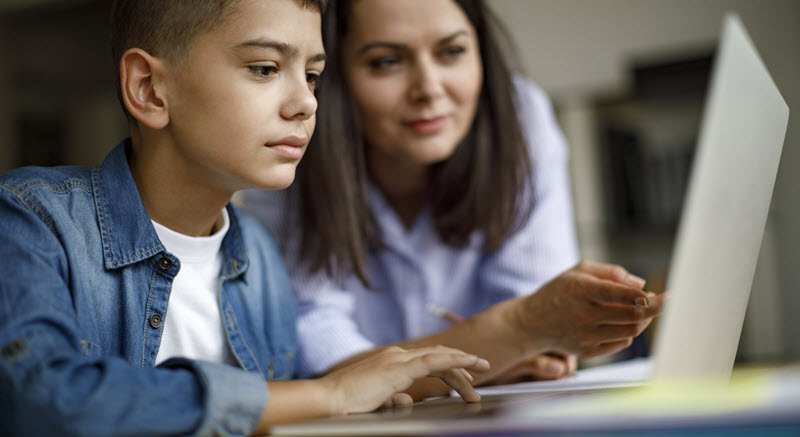| By Gintas Bradunas, Product Manager, Gale |
Seemingly overnight, the world has become home to millions of new online learners as schools go virtual. Now the challenge for educators is to ensure a health emergency does not also result in learning loss.
The good news is online learning can be as or more effective than brick-and-mortar education. Yet virtual learning is its own art and effectiveness depends highly on teachers’ abilities to translate instruction to an online environment. Below are some common tips from one teacher to another to help make your online middle school classroom a success.
Keep Doing What You’re Doing
Good News! You likely know more about distance learning than you think. The first instinct when going fully online is to assume that you need to change your approach entirely. This is probably not necessary. The same approach you used in your brick-and mortar classroom is likely to still work, albeit with some modifications. Consider incorporating:
- Video Conferences
- While not as intuitive as in-person communication, electronic conferencing has come a long way and is an effective method to replicate the class setting. However, they are best used in moderation to lead discussions, activities, or simply to open the floor for questions. Importantly, try to avoid direct instruction using video conferences – students are more likely to check out and this approach simply doesn’t work as well as one might hope. Instead, use this time to connect and to keep habits alive.
- Online Resources
- Depending on your school, you likely already have access to at least some online resources and curriculum. Even if you don’t, there are plenty of open resources, including Gale’s own Gale In Context: Middle School. Using your Learning Management System, Google Classroom, or other platform, share these resources with students virtually and allow them the time and space to complete their work. If you need help integrating these or other resources, your Gale customer success manager is standing by!
- Project Based Learning
- It can be tempting to retreat to a worksheet driven cadence. Resist! Consider this the perfect time to introduce project-based learning to your students. Allow them the space to explore a personal interest or research a topic they care deeply about. This is also a great opportunity to integrate hands-on learning and limit screen time.
- Frequent Feedback and Communication
- Feedback is one of the most effective actions a teacher can take to foster learning. Whatever you do, keep the frequency of feedback on pace. Have students submit assignments on a regular basis and ensure deadlines are kept.
Coach Students and Their Guardians on Effective Learning Environments
As a teacher, you’ve likely spent hours decorating and arranging your classroom. It makes sense. A well-arranged classroom pays dividends in learning outcomes. Similarly, it makes sense to put in the time to ensure you and students know how to create learning environments that will work for them. An effective learning environment:
- Has the resources you need to learn in one place (books, computer, pen/pencil and paper, etc.).
- Is free from distraction. Cellphone, gaming devices, TV are far away.
- Ideally, is a space separate from that which is used for entertainment.
The largest challenge students have in transitioning to online learning is putting the same amount of time and effort as they would when in a brick-and-mortar classroom. It takes willpower to remain disciplined at home and setting sensible boundaries is a major step towards overcoming this challenge.
Of course, parents play an outsized role in a student’s success with online learning. Consider spending some time devoted to coaching parents on effective educational strategies and supporting them in their work. For many, this experience is like entering a first year of teaching without any training. Empathize, connect, and let them know you’re here to help.
It’s the Little Things
This is an unprecedented time for us and our students. It’s important to remember that learning can only occur when our students feel safe and comfortable. Knowing this, it’s important to create space for students to openly discuss their concerns and worries. Some ways to do this in an online environment include:
- Topical projects
- Consider assigning projects on the coronavirus. Creative writing, research, and math equations all have a place in the current crisis as a way to cope, to understand and to learn. Feel free to leverage some of our credible open resources that aid global understanding around the coronavirus, COVID-19, pandemic preparedness, public health and infectious disease, coronavirus infections, and more.
- Daily check-ins
- Students can feel isolated when attending a fully online school. Ensure that they receive daily communication, be it a morning email, a video from you on the day’s topic, a live class session, or simply an update on Google Classroom.
- Motivators
- We’re all in this together. Consider creating a whole-class challenge. How many minutes can we log in an online learning program? Who can read the most books in the next week? Have a creative writing competition or an assignment completion goal. Any way that you can, communicate that we are still a class and we will continue to do awesome things.
Ultimately, transitioning to distance learning can make even the most experienced educator feel like a first-year teacher again. Thankfully, with so many rich resources to draw from students can not only learn, but we as educators can improve our practice and return to brick-and-mortar classrooms with new instructional strategies that will make learning more effective than ever before.
Stay safe and thank you for all that you do!

Meet the Author
As a K‒12 product manager at Gale, Gintas Bradunas works to leverage his past experiences as a middle school teacher and Teach For America corps member to help make products that students and educators will love. He’s an avid reader, lover of podcasts, and a believer that everything can be made better with a cup of coffee.

